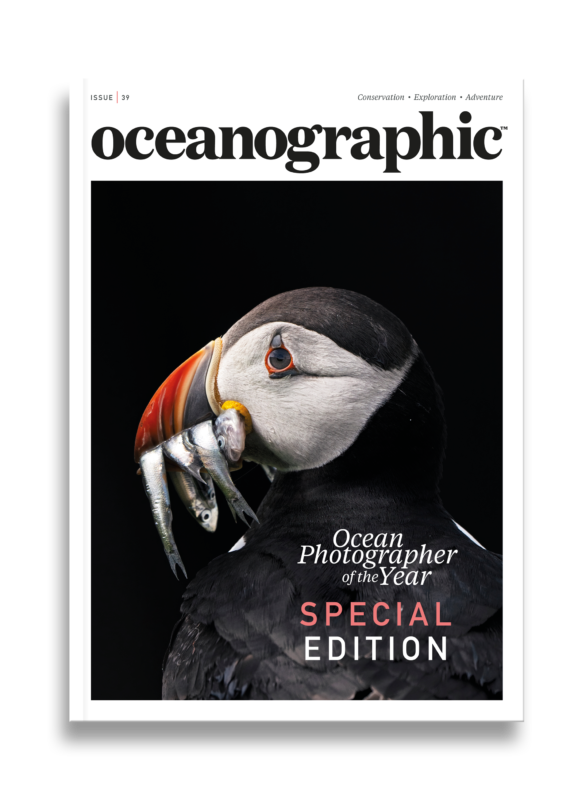Kokoly: Fishing for a future
Like millions of fisherwomen around the world, Kokoly relies on the ocean to live, as both a source of income and nutrition. With fish stocks depleted and vibrant reefs turned to rock, Kokoly’s life is now one of survival.
More than 100 million people in the global South rely on small-scale fishing for their livelihoods and food. These not so small small-scale fishers make up more than 90% of the world’s fishermen and fisherwomen. They fish in near-shore tropical ecosystems, which harbour a variety of marine life. But the lives of these people are ever more precarious. Overfishing, both by small-scale fishers themselves but also industrial fishing fleets, has greatly undermined the fishing stocks they rely on. Climate change, as the result of man-made Co2 emissions, is making the oceans hotter and more acidic, further diminishing sea life. At the same time, these coastal communities face rising ocean levels and increasingly extreme weather events.
Marine conservation organisation Blue Ventures works with small-scale fishers across the tropics to rebuild their fish stocks. With support from the Sundance Institute Stories of Change, I set out to document the challenges small-scale fishers face. I teamed up with Paul Antion, Blue Ventures’s Outreach Manager living in Southwest Madagascar.
We decided to focus on fisherwomen. In most traditional fishing communities, women not only fish, but make and fix nets, and process and trade catches. They live from fishing, but most have no rights over their fisheries, and are often at the bottom of global seafood supply chains which drive overfishing. Research published in the late 1980s shows that fisherwomen in Oceana caught a significant part of the region’s marine food. The regular way they fished also made women more reliable providers of protein for subsistence than men. But more than 30 years on, the huge role of fisherwomen still goes largely unrecognised and often unpaid.
For a couple of weeks Paul and I travelled along the southwest coast – the homeland of Madagascar’s traditional Vezo fishing people – meeting and just talking to Vezo fisherwomen. We came across many strong characters and stories, including one woman who said “now that I have seaweed farming, I don’t need a husband anymore”, but one person stood out: a small diminutive octopus fisherwomen from Lamboara. Kokoly.
In October 2016, Paul and I began visiting Lamboara to document how Kokoly survived from the ocean. We spent hours picking our way over vast reef flats where Kokoly foraged for octopus, sea cucumbers and urchins. We paddled out to the edge of the barrier reef where she fished with a hand line. Some days we walked kilometres to the mangrove forests, where Kokoly gathered bait or cut mangrove poles to build her house. When the tide was low enough, Kokoly would tend her seaweed lines between fishing trips. We would be up at dawn as she went out to sea. Most days, as the tide came in and Kokoly returned from the sea, we’d shelter from the relentless sun in the shadow of a neem tree, where Kokoly’s extended family would gather to rest and chew the fat while they repaired nets and the women plaited each other’s hair. Kokoly told us, “God didn’t make me to sleep during the day. I have to keep working and doing something”. Our experience bore this out. When she wasn’t out at sea, she’d be salting fish, processing sea cucumbers or gathering tree resin in the forest (traditionally Vezo use resin from a euphorbia tree species to seal the hulls of their wooden outrigger canoes). As dusk brought some respite from the heat, Kokoly would go to the beach to repair her wooden canoe or clean her seaweed lines. If she had caught fish that day, she would gut them for supper, then feed her ducks. Each night, just before darkness fell, she would herd her ducks into their shelter for the night. Kokoly is the most genial and affable of people; Paul speaks Vezo fluently and the two of them got along like old friends. Their conversations were long and wide ranging.
By February 2017 we had more than enough footage to give a glimpse into the life of a fisherwoman and how she survives by fishing. We now had to carve a ten-minute film out of it. Writers are encouraged to ‘murder their darlings’. We didn’t go that far, but with a character as unusual as Kokoly in a context as both visually striking and humanly complex as Lamboara, we weren’t able to portray in the film much of what we witnessed and most of the footage ended up on the floor of the editing room. Every documentary filmmaker must have 1,001 offcuts they wish they could have included.


Continue reading
This story is exclusively for Oceanographic subscribers.
This feature appears in ISSUE 10: Interpreting whalesong of Oceanographic Magazine
Printed editions
Current issue
Back issues

Current Issue
Issue 39 Special Edition: OPY2024

Back Issues
Issue 37 Wild Alaska: River & Ocean
Enjoy so much more from Oceanographic Magazine by becoming a subscriber.
A range of subscription options are available.




